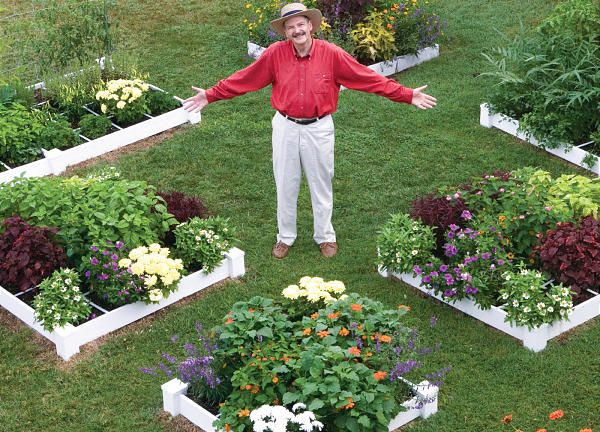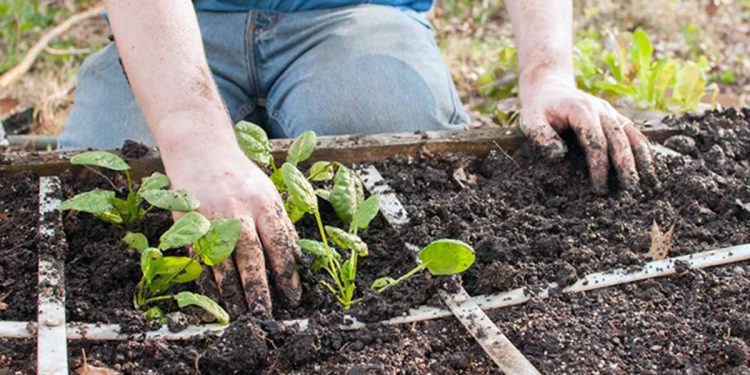Square Foot Gardening (commonly referred to as SFG) is a planting method that was developed by American author and TV presenter Mel Bartholomew in the 1970s. It’s a simple way to create easy-to-manage gardens with raised beds that need a minimum of time spent maintaining them. SFG rapidly gained popularity during the 1980s through Mel’s first book and television series and since then has spread across the world, eventually going ‘mainstream’ with several companies offering ready-to-assemble SFG gardens. SFG advocates claim it produces more, uses less soil and water and takes just 2% of the time spent on a traditional garden. So what makes Square Foot Gardening special and why don’t all gardeners use it?

Square Foot Gardening (commonly referred to as SFG) is a planting method that was developed by American author and TV presenter Mel Bartholomew in the 1970s. It’s a simple way to create easy-to-manage gardens with raised beds that need a minimum of time spent maintaining them. SFG rapidly gained popularity during the 1980s through Mel’s first book and television series and since then has spread across the world, eventually going ‘mainstream’ with several companies offering ready-to-assemble SFG gardens. SFG advocates claim it produces more, uses less soil and water and takes just 2% of the time spent on a traditional garden. So what makes Square Foot Gardening special and why don’t all gardeners use it?
- Thin with Scissors: Instead of pulling up excess plants which can disturb the root systems of the plants you want to grow you snip them off with scissors.
- Accessorise: As well as details of all the above the All New Square Foot Gardening book has practical instructions for constructing various accessories including protective cages that easily lift on and off the SFG beds, covers to extend the season and supports for vertical growing.
There’s a purpose to each of these ‘rules’ and together they make up a powerful and almost fail-safe method for successful gardening. It’s a great method for new gardeners, people who have little time, the elderly or disabled (SFG gardens can be built at a raised height to make them more accessible) and children. Many schools have embraced the SFG method because it’s easy to install and maintain without becoming an additional burden for the teacher. However, there are some limitations:
- Easy to Outgrow: Although many vegetables can be grown in SFG gardens it struggles to accommodate larger plants (squash, melons, main-crop potatoes etc), perennials (globe artichokes, rhubarb) and fruit bushes/trees. Once new gardeners experience the success of SFG gardens they often want to expand the range of crops they grow beyond the standard SFG crops.
- Non-renewable Resources: There’s no doubt that ‘Mel’s Mix’ makes an excellent soil for vegetables . However, two of the three ingredients come from non-renewable sources. Peat takes thousands of years to develop and is a valuable natural sink for greenhouse gases. Vermiculite is mined and is therefore also a non-renewable resource with a significant carbon footprint. In common with many gardeners I won’t use peat and would prefer not to use vermiculite.
- Expensive for Large Gardens: Although SFG beds are cheap to maintain they are quite expensive to set up if you have a large area and want to fill it quickly.
None of these reasons prevents SFG from being a useful part of a garden though – you can use 100% recycled compost in the beds instead of Mel’s Mix, gradually build up the number of SFG beds and combine it with areas of your garden which are set aside for fruit trees and larger crops. Many of the SFG techniques that were revolutionary in the 1980s are now commonly used for vegetable gardening – deep raised beds, not compacting soil, removable covers and plant supports etc.




![The Top & Most Popular Seafood Bucket Restaurants in Dubai for you [Never Miss]](https://uae24x7.com/wp-content/uploads/2020/09/8-seafood-in-a-bucket-scaled-e1600739237403.jpg)
![Procedures for Renewing the Driving License in Abu Dhabi [3 Simple Steps]](https://uae24x7.com/wp-content/uploads/2020/07/Capture-9-e1595666454466.jpg)





